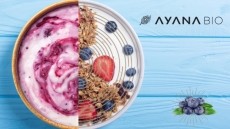Will kale jump the shark? Rhythm Superfoods CEO says no, but expects “shaking out”

Most natural and health food stores have carried multiple brands of kale chips – including Rhythm Superfood’s Rhythm Kale Chips – in myriad flavors for the past several years, and the current level of saturation and competitiveness between the brands is not sustainable, Jensen said.
“In the next 12 months, there will be a shaking out of brands” offering kale chips in this space, and not all of the current products will continue to be stocked, Jensen said.
While he expects his kale chips will come out a winner, Rhythm Superfoods is hedging its bets by expanding distribution into conventional grocery stores – 75% to 80% of which do not currently sell any kale chips. He also is revamping packaging and launching new flavors to retain consumer interest, Jensen said.
Rhythm Superfoods also is expanding its portfolio, in case the kale chip craze wanes, to include two new “top secret” vegetable snacks that will launch in March 2015, in addition to a new line of Superfood Chips that launched last January and are made from ancient grains, Jensen said.
“We are trying to make sure we stay ahead of the curve with the new vegetables” and line of chips in case natural product retailers’ appetite for kale diminishes, Jensen said.
A diverse portfolio
Jensen would not divulge much about the two upcoming vegetable snacks launching in March beyond noting “one is dense and one is light and crispy,” and both are “completely different than our current offerings.”
But, he did say that the vegetable snacks, like the Superfood Chips, “embody our philosophy as a company … to bring superfood-based, lightly processed snacks to the people.”
He added: “We are trying to hold to our mission to come out with new products that are really, really, really good for you, and not just better-for-you.”
To that effect, the line of Superfood Chips are made with nutrient dense ancient grains “that are even more powerful than sprouted seeds or beans,” a spokeswoman said. For example, she noted, “the Jalapeno Lime flavor is made with purple corn, an ancient superfood with more antioxidant powder than blueberries, acai berries and pomegranate juice.”
The baked chip line also blends vegetables and pea protein and is available in Barbeque, Nacho and Sea Salt flavors, in addition to the Jalapeno Lime.
Rhythm Superfoods created the line to be more accessible than kale chips to conventional food shoppers who want a product that has “the look and feel of a chip,” Jensen said. He also made the line available at a more accessible price point of $2.99 to $3.49 for a 5-ounce bag compared to the kale chips, which sell for a suggested price of $4.99 for a 2-ounce bag.
Rhythm Superfoods stands by kale chips
While Rhythm Superfoods is excited about the new products, it is not abandoning its flagship product. Quite the opposite. It is investing heavily in new packaging and flavors that it hopes will help the product sell in conventional stores, Jensen said.
“With the kale chip, there is a hardcore group of people who truly embrace it and buy lots of bags,” which make up the bulk of the firm’s revenue, Jensen said, adding, these consumers “are living and breathing the kale phenomenon.”
Given this segment’s dedication, it can be hard to believe there are still consumers who have not heard of the vegetable, let alone chips made from it, Jensen said. But, he added, “as we venture into mass and even club stores, we are realizing there is a whole level of education that these consumers need” about kale chips.
Therein lies the growth potential – if Rhythm can just convince “people who look at kale chips with a raised eyebrow” to try them, Jensen thinks they will buy them. One way Rhythm is doing that is by aggressively sampling the product in 200 stores any given week, Jensen said.
The firm also hopes to catch conventional shoppers’ attention with its new packaging, which has brighter gem tone colors that pop, Jensen said. The packs also have a clear window and are “less busy and more direct” so that messaging can more easily “resonate with the person who will look at it for just one second – or five if they actually stop to think about it – before they buy it” or pass on it, Jensen said.
The firm also will launch a new website in the coming weeks where it hopes to connect with consumers on a socially conscious level by transparently talking about how the product is made, where the ingredients come from and the health benefits of kale chips and its other products, Jensen said.
New flavors also could attract new consumers, Jensen said, noting next month the firm will launch its “original kale chip,” which will be lightly salted and simple, and an orange-cranberry flavor for the holidays.
Location, location, location
Finally, as a young start-up, Rhythm Superfoods does not have the capital to buy ads during the Super Bowl to reach mainstream consumers, like some large conventional chip brands. Instead it relies on in-store messaging and positioning, Jensen said.
He found kale chips sell best in conventional stores when positioned in the produce aisle, rather than the center store with other chips.
The success of this section is based in part on “the sheer velocity of traffic” that moves through the section, said Jensen, noting “that area of the store has a 90% plus walkthrough rate.”
In addition, consumers in the produce section tend to be more interested in healthy foods and “are in a fruit and vegetable mindset” so they are not thrown off by kale chips if they have never seen them before, Jensen said.
Stocking in the produce section can be more challenging for non-perishable snacks than being positioned in the center aisle, Jensen acknowledged, but it is worth it.
The produce section is “a different dynamic,” he said, explaining unlike the center aisle, the section does not have set racks with computerized space management. Rather, it is more fluid “so you have to have focused attention to detail,” meet with the category buyer three or four times a year, rather than once or twice, and pitch more creative displays.
“The future is bright for us.”
These strategies are working for Rhythm Superfoods as it prepares to push kale chips out to another 2,000 stores in the next two months on top of the 7,000 stores that already carry the product.
“We just broke into some of the conventional space with Kroger” and other large grocery chains interested in the kale chips, Jensen said.
Distribution of the new Superfood Chips also is increasing exponentially with the company adding 2,000 new stores to the existing 1,000 stores in the next two to three months, he added.
Reflecting on these successes and consumers’ growing interest in plant-based foods, even if the popularity of kale wanes slightly with natural product retailers, Jensen said: “The future is bright for us.”






















